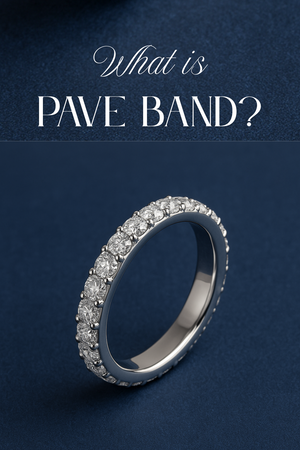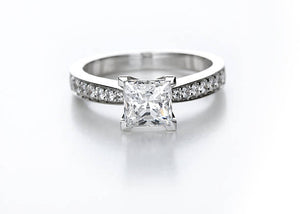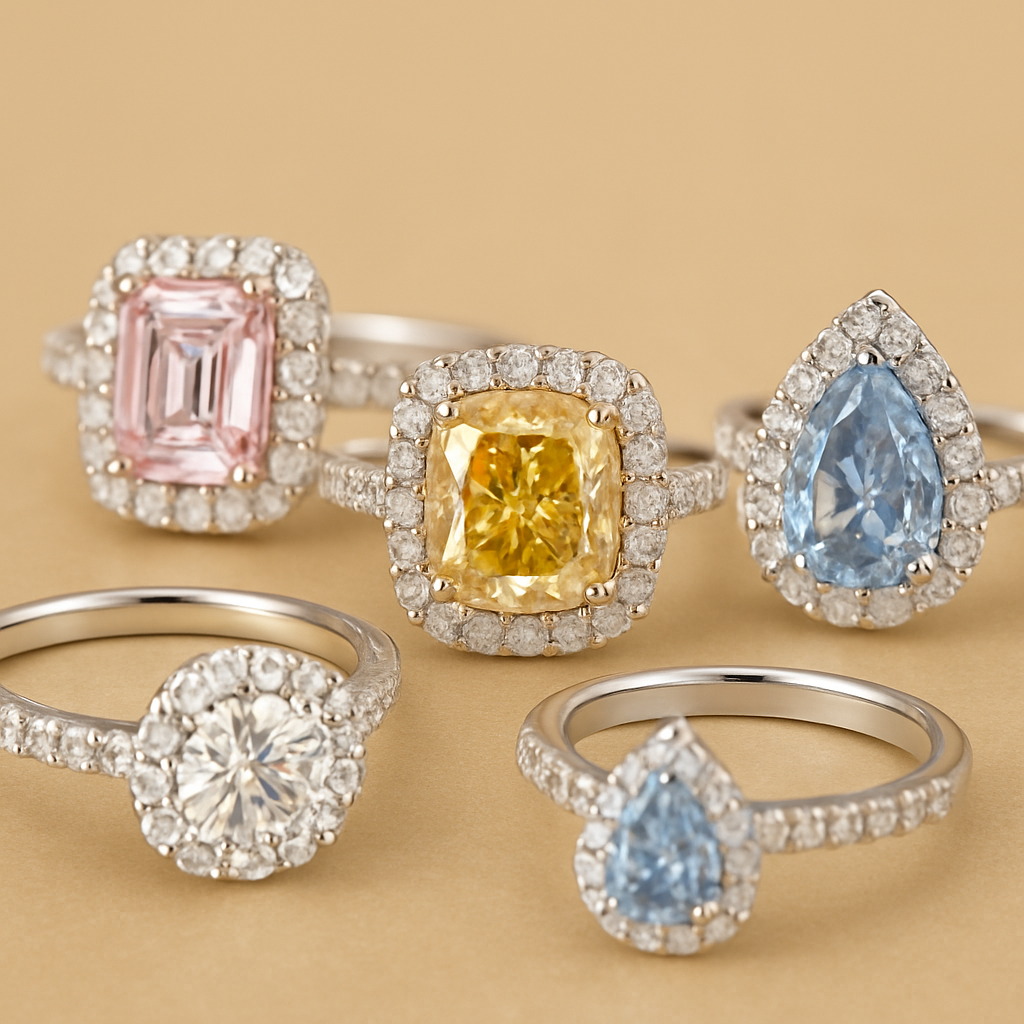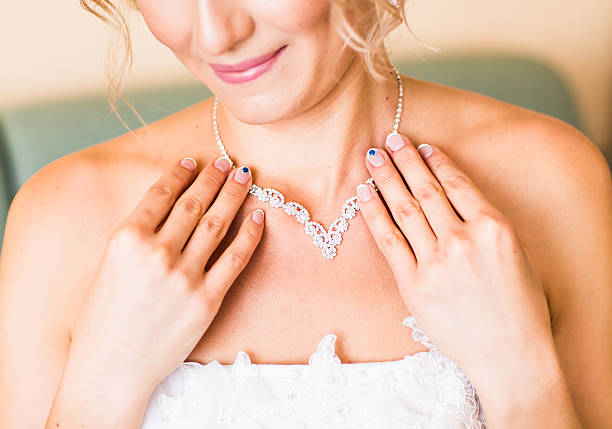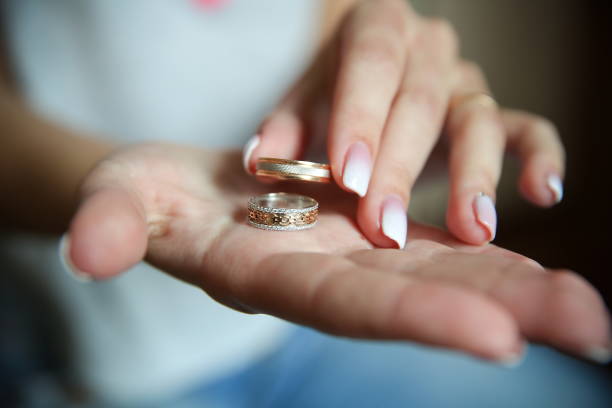The cut, clarity, and carat of the gemstone are probably the main factors you consider when looking for the ideal ring or other piece of fine jewelry. The setting, however, is equally important because it keeps that lovely stone in place. The most recognizable, dependable, and adored jewelry setting is the prong setting. Prong settings provide maximum brilliance and timeless elegance in engagement rings, whether they are stunning solitaire or vintage-inspired.
This blog explores the distinctive attributes of the prong setting, how it differs from other settings, and how to take care of it. This is your comprehensive guide whether you're a jewelry enthusiast or a first-time buyer.
💠 What Is a Prong Setting?

A metalwork technique called a prong setting is used to hold a gemstone firmly in a piece of jewelry, usually a ring. Thin metal arms known as prongs or claws protrude from the band or basket in this design, gently bending over the edge of the gemstone to secure it.
Typically, 4-prong or 6-prong settings are seen. Six prongs provide more security with a slightly fuller appearance, while four prongs produce a minimalist, open style with more light exposure. Particularly in vintage or avant-garde designs, you might also come across 3-prong, 5-prong, or 8-prong variations, depending on the shape and design of the stone.
Common uses for prong settings include:
- Rings for engagement
- Studs of diamonds
- Pendants in solitaire
- Rings with three stones
What makes this setting so popular is its perfect balance between beauty and practicality—showing off the stone while keeping it safe.
💎 Why Choose a Prong Setting?

For more than a century, prong settings have been a popular option, and it makes sense. Below is a summary of their special benefits:
✨ Maximum Light Return and Brilliance
A prong setting's open design lets light into the gemstone from various directions, bringing out the diamond's inherent brilliance. For round brilliant or princess-cut diamonds, where maximum fire and brilliance are desired, this setting is perfect.
🌟Classic, Timeless Style
The most recognizable engagement rings, such as the well-known Tiffany® setting, use prongs for a reason. They provide a sophisticated and timeless look that makes the ring classy yet adaptable to any fashion or ensemble.
🔧 Simple to Resize and Repair
Maintaining prong settings is comparatively simple for jewelers. Usually, a prong can be re-tipped or adjusted without having to replace the entire setting if it becomes bent or worn. Additionally, it's usually easier to resize a ring with prongs than more complex settings like channel or tension styles.
💰Cost-effective
Prongs are frequently less expensive than bezel or halo settings because they require less metal. The center stone can take up a larger portion of your budget than the setting.
🪶Comfortable and lightweight
Prong settings are a comfortable option for daily wear because they are lighter on the finger and don't significantly increase the ring's bulk.
🔍 Types of Prong Settings
To accommodate different gemstone shapes and fashion tastes, jewelers have created a variety of prong setting styles. Knowing these differences enables you to select a look that complements your tastes and way of life.
1. Standard or round prongs
These are the most prevalent; they cling to the stone and have the shape of tiny balls or beads. They provide a classic and tidy look, making them ideal for round or cushion-cut stones.
2. The V-Prongs
In order to prevent chipping and damage, these are specifically shaped to fit the pointed ends of gemstones such as princess, marquise, or pear-cut diamonds. For safety and style, the V shape encircles the sharp tip.
3. Talon or Claw Prongs
These have a pointed or sharp tip, which gives the ring a contemporary, edgy appearance. They include a subtle
4. Two Prongs
Two smaller prongs are used at each corner rather than one. This design provides more stability as well as a delicate, vintage appearance. Heirloom-style or antique-inspired rings frequently have two prongs.
5. Common Prongs
Shared prongs are frequently used to secure two adjacent stones with the same prong in multi-stone rings or eternity bands. This reduces the amount of metal between stones for maximum sparkle and produces a seamless, closely-set appearance.
🔒 Is a Prong Setting Secure?
Yes, a prong setting is sufficiently secure for daily use when it is properly designed and maintained. It does, however, need attention and care, just like any other fine jewelry.
Advice for Increasing Lifespan:
- Examine frequently: Every six to twelve months, have a jeweler examine the prongs for wear or loosening.
- Avoid harsh impact: For added safety, think about using a lower-set prong or even a bezel setting if your lifestyle or job requires a lot of physical exertion.
- Remove during vigorous activity: To avoid snagging or damage, it is best to take off your prong-set ring when cleaning, gardening, or working out.
- Keep in mind that a 6-prong setting provides greater protection than a 4-prong, particularly for large or valuable stones.
💠 Best Gemstones for Prong Settings
A wide range of stones look stunning in prong settings, which are adaptable and include:
- In particular, round, oval, princess, pear, and cushion cuts of diamonds
- Sapphires: When set in claw or V-prong settings, rich blue tones look stunning.
- Rubies and emeralds: Their striking hues stand out in simple prong designs.
- For environmentally conscious consumers looking for brilliance and ethical sourcing and lab-grown diamonds are ideal.
Since softer stones are more likely to chip, always make sure the gemstone is hard enough (Mohs hardness 8+) to withstand an open setting like prongs.
🧼 How to Care for a Prong-Set Ring
To preserve the beauty of your jewelry and safeguard your focal stone:
- Use a gentle brush and warm water with a mild soap to clean. Steer clear of harsh chemicals.
- Every few months, examine the prongs under a magnifying glass.
- To avoid the prongs scratching other jewelry, store them separately.
- Once or twice a year, have it professionally cleaned and inspected by a jeweler.
Your ring's life and beauty can be greatly increased by following this simple routine.
📝 Final Thoughts: Is the Prong Setting Right for You?
If you're dreaming of a ring that radiates elegance, enhances the sparkle of your stone, and offers a graceful, timeless profile—then the prong setting is the perfect choice. It’s suitable for both modern minimalists and lovers of vintage charm.
At San Liora, we specialize in crafting fine jewelry that combines ethical craftsmanship, premium lab-grown diamonds, and meticulous attention to detail. Our prong-set designs are made to celebrate life’s most meaningful moments—whether you’re proposing, commemorating an anniversary, or treating yourself to a timeless treasure.
Each San Liora piece includes:
-
✅ 12-Month Warranty against manufacturing defects
-
📜 Appraisal Certificate for insurance and valuation
-
🌱 Sustainably Sourced Stones
-
💎 Handpicked Lab-Grown Diamonds
-
🛠️ Free Resizing & Polishing Services
So if you're looking for a setting that captures beauty, brilliance, and peace of mind—a prong setting from San Liora is a choice you’ll never regret.
With proper care, a prong-set ring will become a cherished heirloom that shines for generations.



